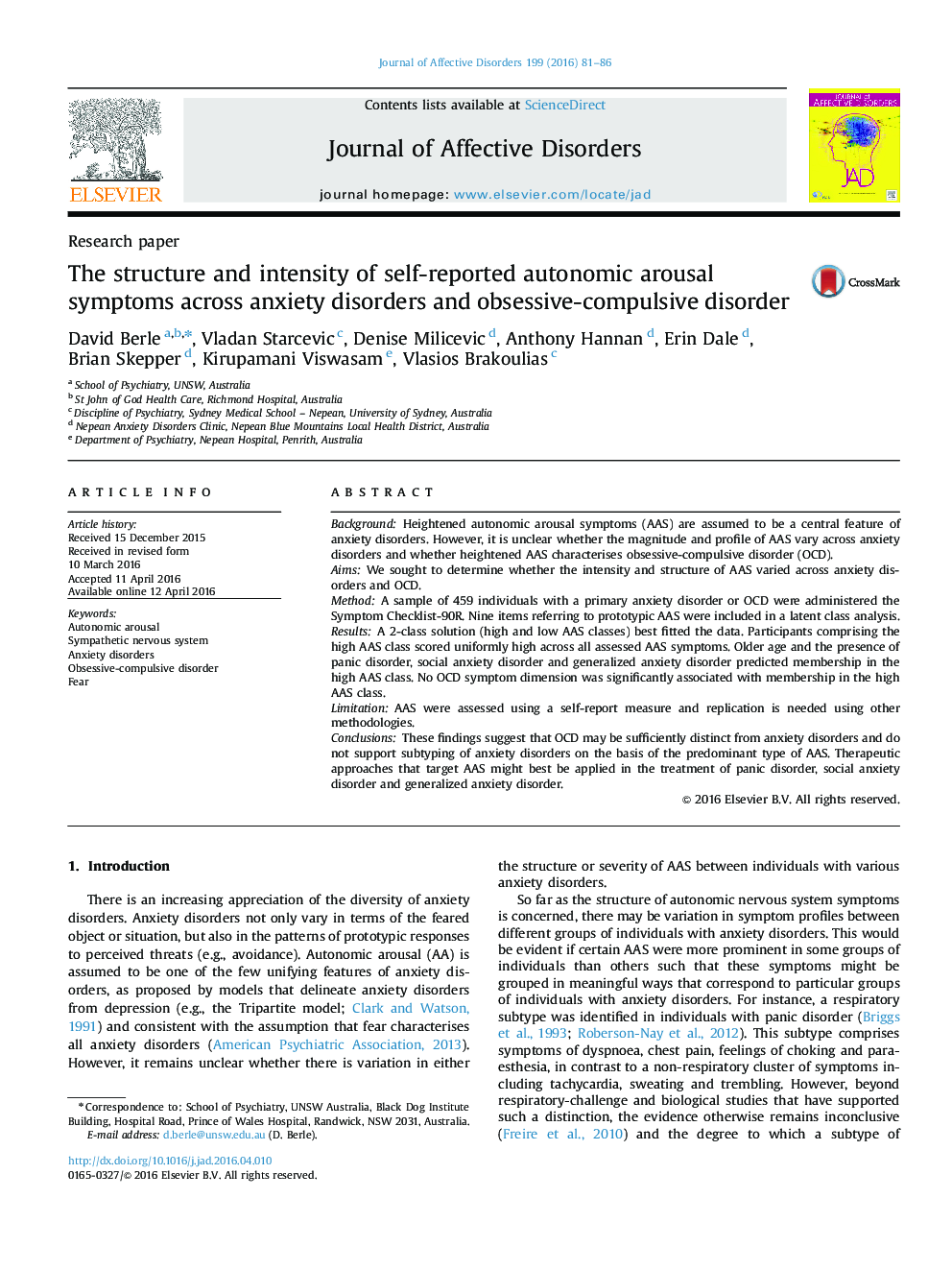| کد مقاله | کد نشریه | سال انتشار | مقاله انگلیسی | نسخه تمام متن |
|---|---|---|---|---|
| 6230145 | 1608126 | 2016 | 6 صفحه PDF | دانلود رایگان |
- Two classes of individuals with anxiety disorders were identified: Those with high levels of autonomic arousal (AA) and those with low levels.
- Groups in which some (but not all) AA symptoms were elevated were not identified.
- High levels of AA symptoms characterised panic disorder, social anxiety disorder and generalized anxiety disorder.
- Major depressive disorder, specific phobia and OCD were not associated with high levels of AA symptoms.
- There were no differences between OCD symptom dimensions in the extent of their association with AA symptoms.
BackgroundHeightened autonomic arousal symptoms (AAS) are assumed to be a central feature of anxiety disorders. However, it is unclear whether the magnitude and profile of AAS vary across anxiety disorders and whether heightened AAS characterises obsessive-compulsive disorder (OCD).AimsWe sought to determine whether the intensity and structure of AAS varied across anxiety disorders and OCD.MethodA sample of 459 individuals with a primary anxiety disorder or OCD were administered the Symptom Checklist-90R. Nine items referring to prototypic AAS were included in a latent class analysis.ResultsA 2-class solution (high and low AAS classes) best fitted the data. Participants comprising the high AAS class scored uniformly high across all assessed AAS symptoms. Older age and the presence of panic disorder, social anxiety disorder and generalized anxiety disorder predicted membership in the high AAS class. No OCD symptom dimension was significantly associated with membership in the high AAS class.LimitationAAS were assessed using a self-report measure and replication is needed using other methodologies.ConclusionsThese findings suggest that OCD may be sufficiently distinct from anxiety disorders and do not support subtyping of anxiety disorders on the basis of the predominant type of AAS. Therapeutic approaches that target AAS might best be applied in the treatment of panic disorder, social anxiety disorder and generalized anxiety disorder.
Journal: Journal of Affective Disorders - Volume 199, 15 July 2016, Pages 81-86
